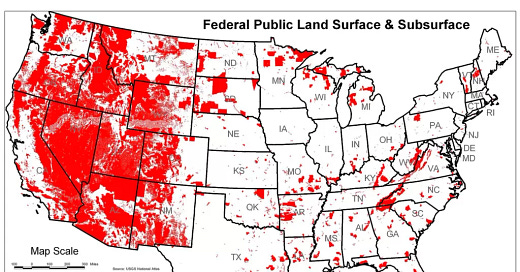Utah leads lawsuit challenging federal control of third of its lands
65% of Utah's land is federally owned.
In August, the state of Utah filed a lawsuit in the U.S. Supreme Court challenging federal control over more than a third of the land within its borders. The lawsuit has now gained many “friend of the court” briefs from states, including a brief signed by the North Dakota attorney general.
The lawsuit asserts that federal policies are restricting access to public lands for recreation, resource exploration and development. Utah is seeking to manage 18.5 million acres of “unappropriated” lands controlled by the Bureau of Land Management, or about 34% of the land within Utah’s borders. The Court has received supporting briefs from the states of Idaho, Alaska, and Wyoming; the Arizona, Utah, and Wyoming legislatures; Utah’s entire congressional delegation; and more nonprofits and professional organizations.
Based on the headlines, you’d be forgiven for assuming that Utah’s lawsuit is a power-grab to “seize” federal lands and sell them off to the highest bidder:
Utah aims to control federal lands with support from 12 states — Environmental Health News
12 states get behind Utah’s lawsuit to take over millions of acres of federally-controlled land — Utah News Dispatch
Utah hoping Supreme Court will break precedent and transfer vast tracts of federal land to states — NPR
Access to public lands is important for access to public resources. That includes recreation, grazing, timber harvesting, mining, exploration and development for oil and gas, and development of solar and wind farms as well as the transmission lines needed to bring their electricity to population centers. It’s particularly important in Western states where vast swaths of land are under federal management. 65% of Utah’s land is owned by the federal government. In Nevada, almost 85% of its land is owned by the federal government. In Alaska, 61% is owned by the federal government and most of the rest is owned by the state. (Only about 7% of Minnesota’s land is controlled by the federal government, most being forest acreage in Chippewa and Superior national forests).
The Supreme Court has not yet decided if it will hear the case, but if it does, it may answer some worthwhile questions about federal land management.
This piece was originally published at Center of the American Experiment on October 30, 2024.





Great post!
The continuing story of miles and miles of little black solar panels.